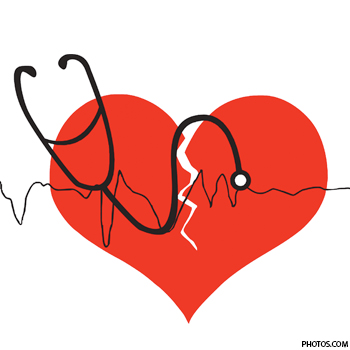 Take all the “white stuff” out of your diet. You’ve read it in popular magazines, heard it from your friends and even from the lips of the long reigning queen of day time television. Taking away all things white from your diet – bread, pasta, bakery items and sugar can be an excellent way of reducing empty calories from what you eat as well as losing weight.
Take all the “white stuff” out of your diet. You’ve read it in popular magazines, heard it from your friends and even from the lips of the long reigning queen of day time television. Taking away all things white from your diet – bread, pasta, bakery items and sugar can be an excellent way of reducing empty calories from what you eat as well as losing weight.
There is little doubt that refined sugar and flour, for the most part, have been stripped of nutrients and fiber and are little more than a significant amount of complex carbohydrate starch. These complex starches are not only high in calories but can be quite troublesome for our bodies to metabolize.
However, the white stuff is by no means the only grain based complex carbohydrates that can be eliminated to enhance weight loss and also aid in reducing the current cause of many of the leading health conditions claiming the lives of Americans today. A serious health condition, Metabolic Syndrome, occurs in approximately 20-30% of all industrialized populations. It is a growing medical condition that can be directly linked to diets high in complex carbohydrates and lifestyle behaviors.
The symptoms of Metabolic Syndrome relate to elevated insulin levels and include high blood pressure, obesity, increased risk for type 2 diabetes, increased risk of dementia, fatty liver and potential kidney damage. In addition, many complex carbohydrates of grain derivitatives are linked with allergies, skin conditions, ear infections especially in children, fatigue, sleep problems and depression.
Given the risk for Metabolic Syndrome, taking out the white stuff should be a positive preventative way to avoid metabolic syndrome and its accompanying symptoms. But there’s more to addressing the issues of grain based complex carbohydrate consumption than just removing the “white stuff”. As humans we do not possess the enzymes required to digest cellulose, the protective fiber found on the outside of all grains, which is why we have to mill flour – to breakdown the cellulose that we cannot digest or gain nutritional benefit from.
Cellulose protected plant foods are edible only by rudiments – double bellied animals which possess the enzyme system and digestive engineering to utilize grain foods as their dietary staple. Thousands of years ago, when the continents divided and humans went from migrating, nomadic hunter -gathers to stationary agriculture based tribes, we needed to identify a dependable food supply and grains became just that.
We quickly learned however that we needed to do something to the grain to be able to ingest it. Trying to chew on wheat or even rice without altering its structure in some way was impossible and resulted in not only sore tongues and lips, but upset digestive systems. Milling of the cellulose rich wheat, rye and corn grains produced flour which could easily be chewed and ingested, unlike the raw grains.
Thus began our use of grains, which are sweet, versatile to cook and a dependable food source. Evolutionary problem solved. Or was it? Let’s look at the positive side of making the switch. Simply switching from white to whole wheat bread can lower heart disease risk by 35% according to the Harvard Nurses study of 75,000 nurses, who ate whole grains in place of white flour.
There two big differences between white bread and whole wheat bread is the processing and the amount of fiber the flour retains after processing. While there are three parts to a wheat berry which both are made from, white flour processing only uses the “endosperm”, the starchy part of the berry. Whole wheat flour uses the bran outer layer which is the cellulose we cannot digest and the germ part as well. We’ve all heard of wheat germ, which contains the plants nutrient stores.
White bread has almost zero nutrient value unless it is enriched, while whole wheat flour is much higher in fiber, does contain vitamin B6, E, magnesium, zinc, folic acid and chromium. The bad news here is that generally the baking or cooking process destroys much or all of the vitamin content. Some minerals and certainly the fiber can remain even after baking. The most important difference however is the fiber.
Harvard studies on fiber show that this indigestible portion of grains, can lead to fewer heart attacks, decreased diverticular disease, type 2 diabetes and constipation. It also provides fullness, hunger satiation, aids bowel integrity. So then why any concern about whole grains? Whole grains still require the secretion of insulin to utilize the complex carbohydrate in the whole grain products and it is the insulin that is the main culprit in metabolic syndrome.
If an individual replaces the same amount of white flour products with whole grain products they will enjoy increased nutrient benefits, however if they have already developed a high insulin secretion due to the white flour products they have consumed and probably over consumed, switching to whole grain products will not necessarily produce the positive outcomes they are hoping for.
In my more than 30 years of practicing nutrition, I have seen countless individuals with a wide span of conditions improve dramatically when all flour based products were eliminated from their diets. Many of us are not genetically or enzymatically built to ingest and handle the metabolism of grain foods.
While they may appear not to be as bothersome for some individuals, many of us gain weight, develop skin problems, sugar regulation issues, bowel problems, acne and other chronic concerns that can be either greatly improved or eliminated by simply removing all flour products from the diet.
The reasons can be twofold. First, the gluten contained in grains and secondly, the insulin secretion required for metabolizing the carbohydrate starch. When the Islets of Langerhans beta cells of our pancreas have enlarged over time to produce higher levels of insulin to accommodate the amount of complex carbohydrates we are eating, they will continue to do so if complex carbohydrates are ingested, even when a more nutrient rich alternative such as whole grains is consumed.
In my experience and practice based research, weight loss and improved overall health is the general outcome for individuals, both with and without hypertrophy of the insulin secreting cells, when all flour and sugar products are removed or dramatically reduced in their diet. There is, however, a satisfying and delicious alternative to not consuming any flour products that many are using with great success. There will be more to share on the subject in the upcoming Part II of this discussion.
(c) 2012 Georgianna Donadio
http://www.medicinenet.com/metabolic_syndrome/page2.htm
http://www.webmd.com/allergies/guide/wheat-allergy
http://www.channing.harvard.edu/nhs/
http://www.hsph.harvard.edu/nutritionsource/what-should-you-eat/fiber-full-story/index.html
 The way we feel – especially being hurt or angry can have very negative effects on other parts of our physical body as well as on our emotions. When we are experiencing internalized anger, our nervous and hormone systems react, creating harmful side-effects, both physically and mentally and this can lead to compromised health as well as compromised personal and professional relationships.
The way we feel – especially being hurt or angry can have very negative effects on other parts of our physical body as well as on our emotions. When we are experiencing internalized anger, our nervous and hormone systems react, creating harmful side-effects, both physically and mentally and this can lead to compromised health as well as compromised personal and professional relationships.






